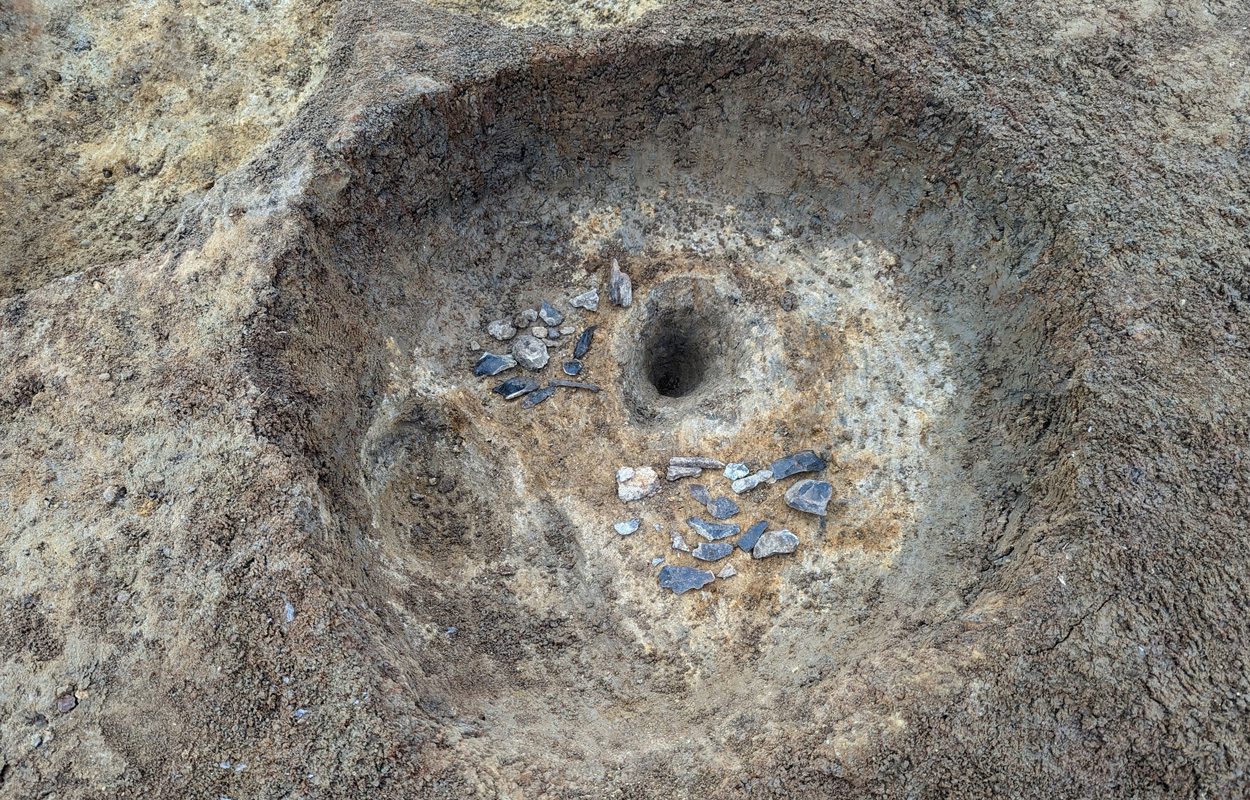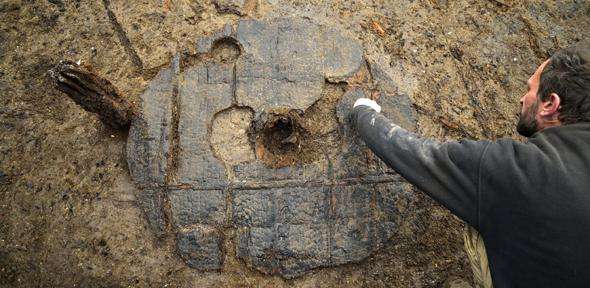The quarry is one of the largest sand and gravel extraction sites in the UK, managed by Hanson UK, a supplier of low carbon heavy building materials to the construction industry.
The site covers an area of approximately 975 hectares, which overtime will be phased to create Britain’s biggest reedbed along with open meres, wet scrub and grassland, all within a 700-hectare nature reserve.
A team of archaeologists from the Cambridge Archaeological Unit, part of the Department of Archaeology at the University of Cambridge, have uncovered several clusters of Neolithic pits with datable material such as flint and pottery.
 Image Credit : Cambridge Archaeological Unit
Image Credit : Cambridge Archaeological Unit
Some of the clusters contained Peterborough Ware, a decorated pottery style from the early to middle Neolithic that dates to roughly 3500 to 3000 BC. Peterborough Ware is known for the impressed pits made by bone or wood implements in its sides or circular ‘maggot’ patterns made using whipped cord.

One of the most notable discoveries is a decorated complete Grooved Ware pot (header image) from 2900 to 2400 BC. The vessel was found in a pit and was likely deposited whole, which overtime has collapsed from the weight of the soil above.
Since many Grooved ware pots have been found at henge sites and in burials, it is possible that they may have had a ritual purpose as well as a functional one.

Excavations at the Needingworth quarry site are ongoing, and the team plan to publish more information on their latest findings over the next week.
The Cambridge Archaeological Unit is the same team behind the famous Must Farm excavations, a Bronze Age settlement at Must Farm quarry near Peterborough in Cambridgeshire.
Header Image Credit : Cambridge Archaeological Unit






